The common name “fan palm” refers to a number of species of palms grouped loosely together by the shape of their leaves.
Many of these large-leafed palm trees are native to the American southwest and are species in the genus Washingtonia.
Others, such as the Mediterranean fan palm (Chamaerops humilis) and the ruffled fan palm (Licuala grandis) are species in different genera that share the group’s large, beautiful, pleated leaves.

We link to vendors to help you find relevant products. If you buy from one of our links, we may earn a commission.
Almost all fan palms love hot, sunny weather. Grown widely across the Middle East, southwestern North America, and other warm, tropical, or arid regions of the world, these trees prosper outdoors under these conditions.
Elsewhere, they’ll need the cover of a greenhouse, conservatory, or a cozy, well-lit corner of your home. A few species require humidity and part shade, but warmth is still a must.
To find out more about growing your own fan palms, read on. Here’s what we’ll cover:
What You’ll Learn
What Are Fan Palms?
There are numerous species referred to as fan palms and many are widely used in landscaping.
Although this group of plants come from a number of different genera, they’re all part of the true palm family, Arecaceae.
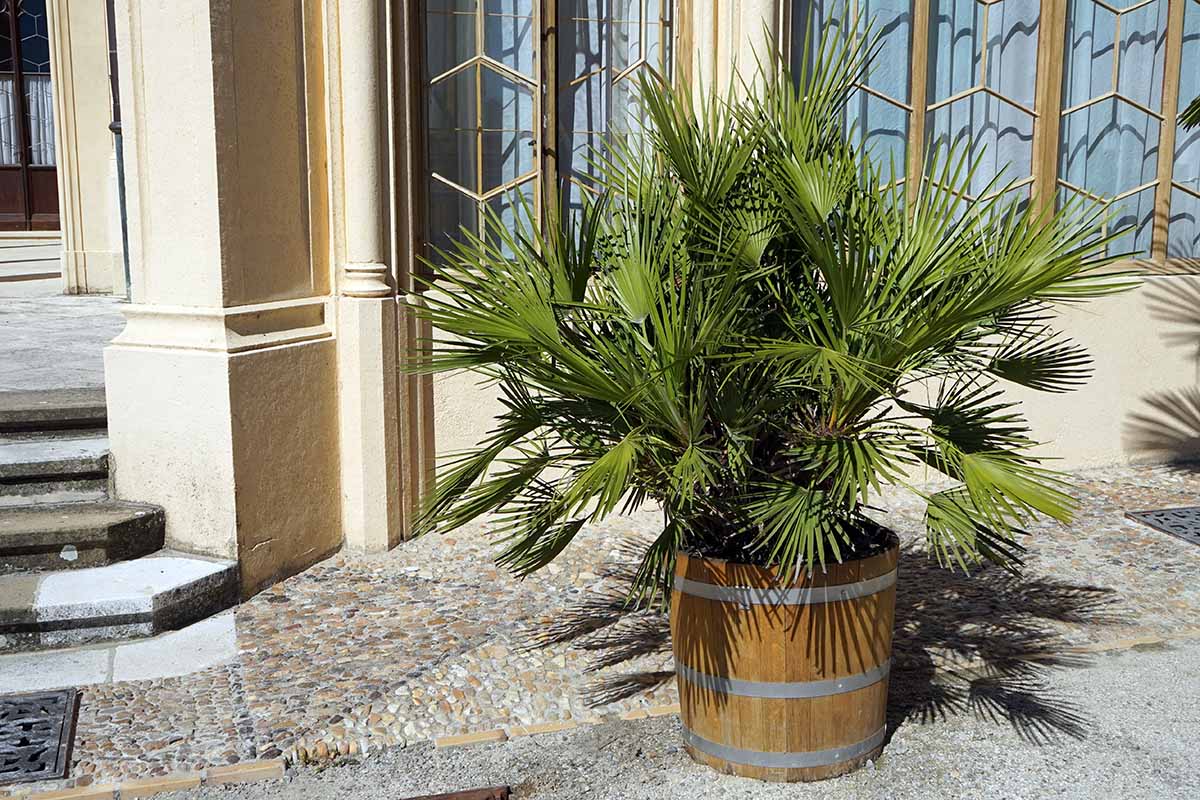
This means they share a lot of the same morphological characteristics such as the distinctive evergreen leaves arranged at the top of an unbranched, single trunk which is often covered in old leaves, or leaf bases. Others may feature multiple trunks and grow in clusters.
Fan palms all have a similar leaf shape and produce large, wide, fan-shaped fronds, known in botanical terms as palmately lobed.
No two types of fan palm are alike, however, and it’s important to remember as you read through this guide that we’re providing a broad overview and you’ll need specific information for each species to cultivate them successfully.
The Mexican fan palm, Washingtonia robusta, for example, thrives in hot, arid conditions, while the ruffled fan palm, Licuala grandis, likes moisture and shade.
As a group, these plants are very popular in the horticultural trade. Grown in botanical gardens, backyards, and urban landscaping around the world, fan palms are beloved for their fetching foliage and copious clusters of flowers and fruit.
Although they may vary in their growing requirements, once established many of these species will endure for years. In general, they are hardy in Zones 7 to 11, depending on the species.
Certain members of this group have become symbolic of their native regions. The Mediterranean or European fan palm, for example, is a symbol of its namesake region, while the Mexican fan palm is an icon of Hollywood.
To find out how to grow one of these horticultural classics, or their close kin, read on.
Fan Palm Propagation
Like all true palms, fan palms are grouped into a category of plants called “monocots.” Monocots have numerous distinguishing characteristics, including an inability to be grown via cuttings.
Your best chance at propagating these striking plants is to use one of the methods described below.
From Seed
These plants are considered pretty easy to start from seed. One of the reasons they’re so straightforward is the seeds don’t require the same complex process of stratification as those with hard seed coats do.
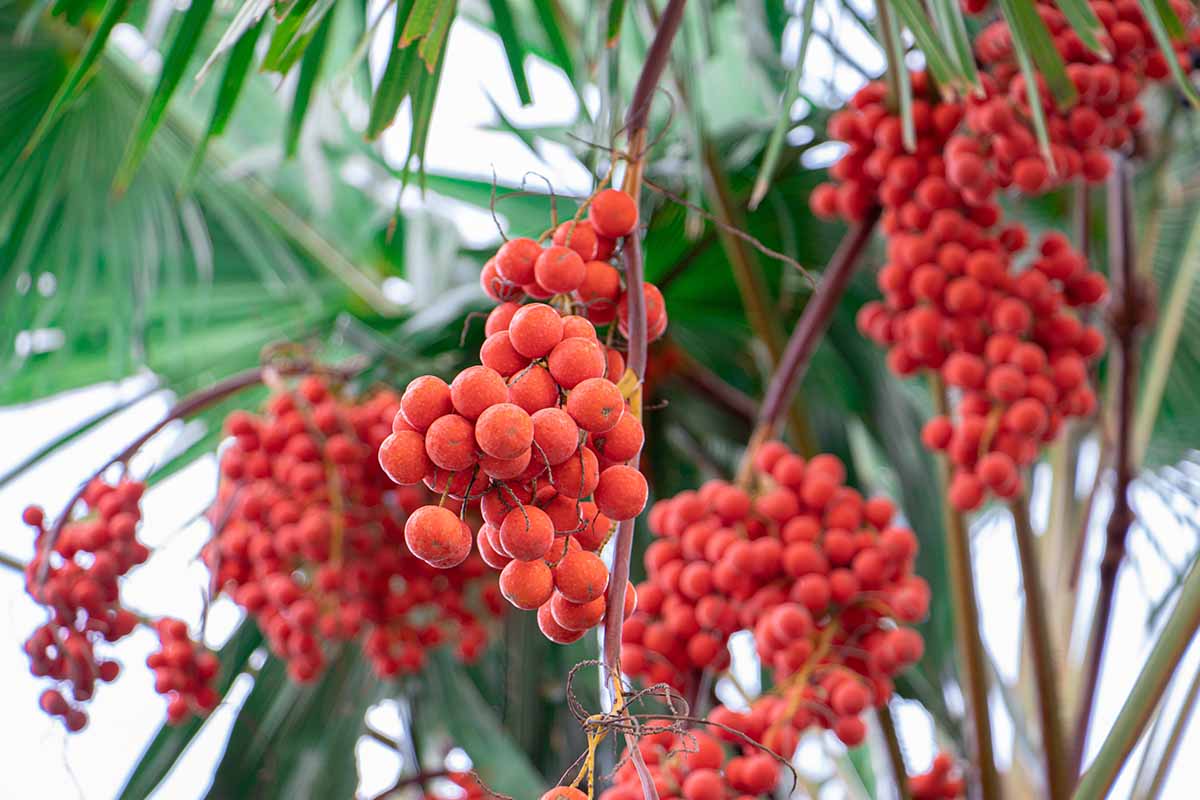
Seed can be purchased online or collected straight from a wild or cultivated specimen. To collect seed from an existing tree make sure the fruit is ripe.
For Mexican fan palm, this will mean the fruits will be black and in the case of the European type, they’ll be deep purple.
Once collected, seeds must be cleaned, or stripped of their flesh. This will help minimize the introduction of unwanted fungi into your potting substrate. Pick the flesh off with your fingers and scrub the seed with a rough sponge to get them as clean as possible.
Next, float your seeds in water. Those that float are not viable and should be discarded.
The specifics will vary depending on what species you are growing, but here’s a general overview:
To speed up the process of germination, soak the seeds in water for four days, making sure to change the water daily, especially if it gets filmy.
Fill several four-inch pots with a freely draining substrate such as cactus or palm tree soil.

You can find Palm Tree Soil from Soil Sunrise available on Amazon.
Sow the seeds just below the surface of the soil, water thoroughly, and place pots in full sun in a warm location with temperatures of 80 to 90°F.
If you don’t have a warm enough location for this, a sunny windowsill with a heat mat should do the trick. Keep the soil evenly moist, but not waterlogged. Germination should occur in a week or two.
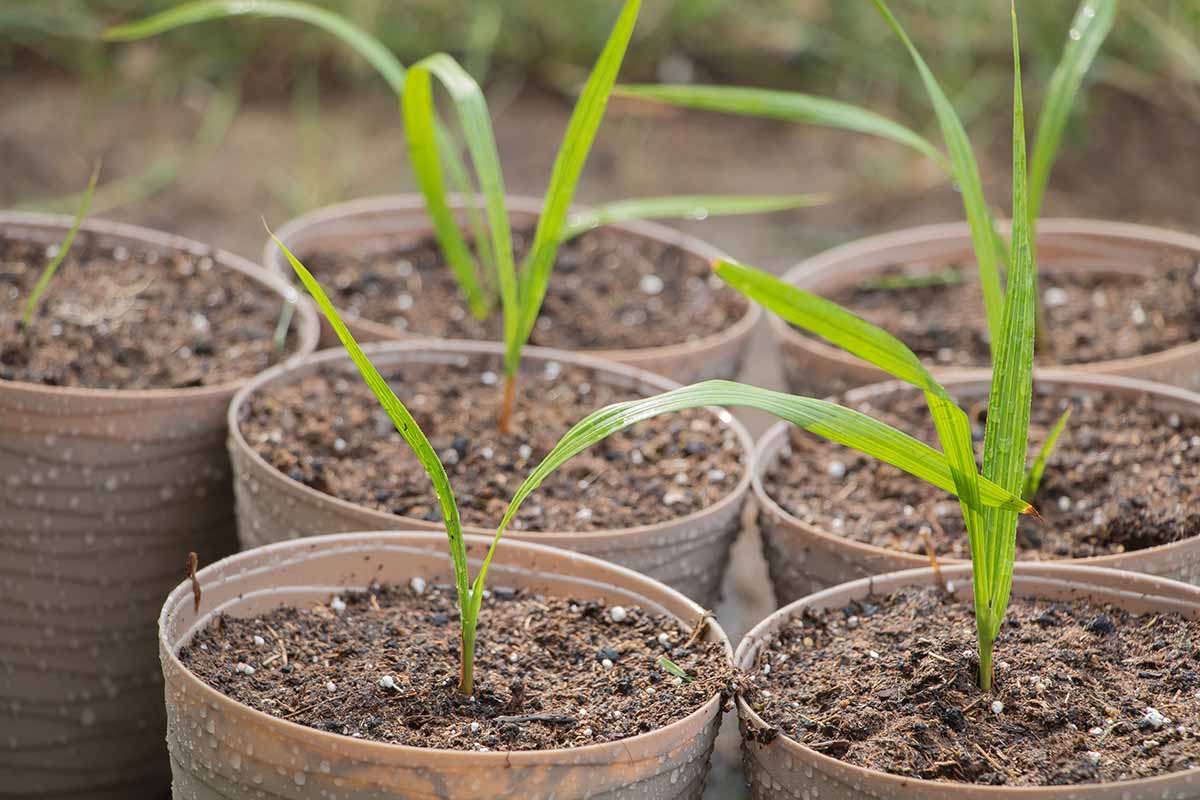
To take proper care of your little, sprouted palmlettes, make sure the soil stays moist but not soaking wet. Once plants have produced their second or third true leaf, you can pot your babies on to a larger container and pull back on the watering a little bit.
Most adult specimens like dry soils and are extremely susceptible to rot. Young plants with established root systems can wait until the surface of the soil has dried out before you water again.
For more information about starting from seed, check out our guide to growing palm trees.
Via Division
As fan palms grow, some species produce offshoots, which can be dug up and planted elsewhere.
Offshoots are also known as “suckers” as they reroute some of the nutrients from the parent plant into their own tissues. This vegetative growth is how many rhizomatous plants spread.
European, Chinese and ruffled fan palms produce suckers, but those in the Washingtonia genus, and the bismarck types do not.
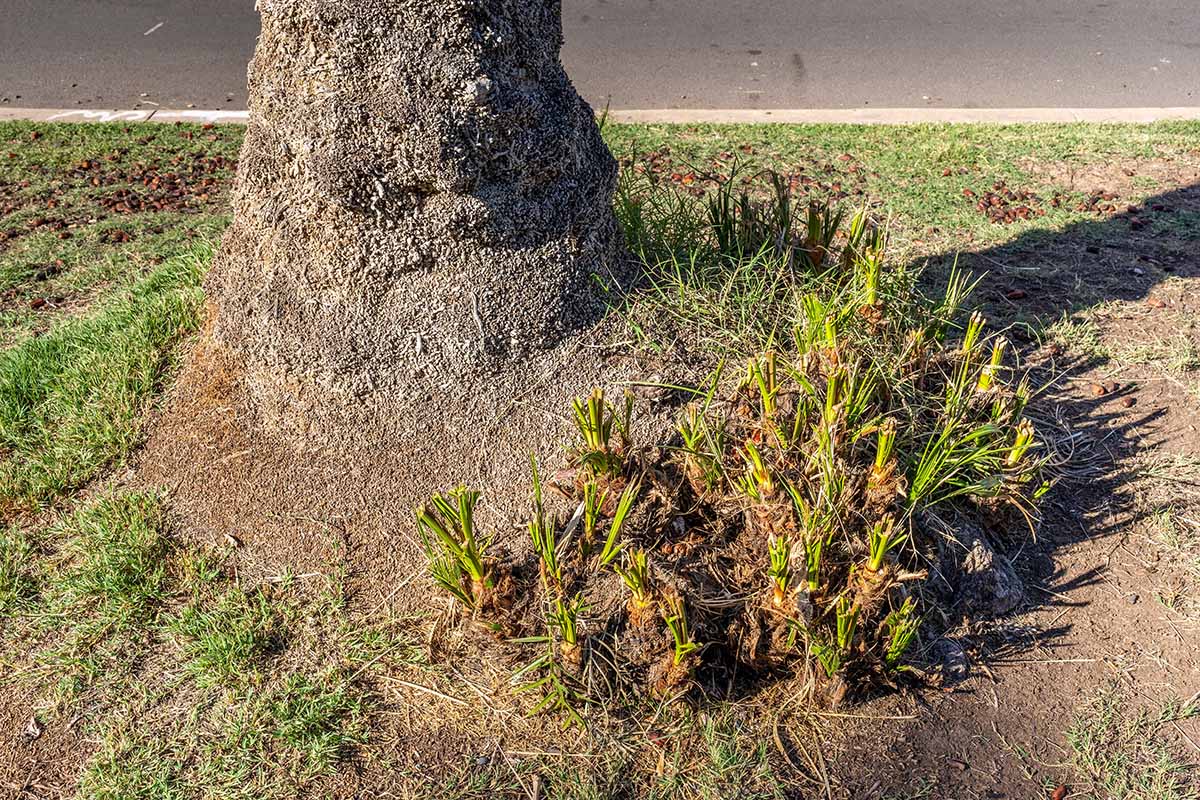
Suckers can be sliced off the parent plant with a sharp knife, saw, or spade, depending on how large the root ball is. If you’re dealing with a potted specimen, it’s often easier to take the entire plant out of the pot, lay it on a tarp, and slice off the offshoot, like you’re cutting through a cake.
You’ll have to backfill the original container with potting soil once you return the mother plant to her spot. Make sure you water her well after the ordeal is over to help her through the shock!
If you have a large outdoor specimen with offshoots, use a shovel. Although it’s a lot more physically taxing to remove suckers from a specimen growing outside, the process is the same, but performed while the plant remains in the ground.
While severing the offshoot, be very careful not to damage the trunk of the parent plant. Even superficial wounds can invite pathogens and pests.
Once you’ve successfully extracted an offshoot, plant your baby in a pot filled with appropriate substrate.
The pot should be large enough to comfortably contain your offshoot’s existing root structure, but not too much bigger than that. Water thoroughly and place in a sunny, warm location.
Make sure the soil stays consistently moist until the young plant shows signs of new growth, then you can allow the surface of the soil to dry out.
Transplanting
If you’re transplanting young specimens you started from seed, make sure they have at least two true leaves before moving them.
True leaves will resemble the mature plant’s leaves, but are a bit smaller. If you’re planning on transplanting outside, harden your babies off gradually, increasing the amount of direct sunlight and wind they’re exposed to each day in increments of an hour.
You can also obviously go the easier route and purchase a young plant at a nursery.
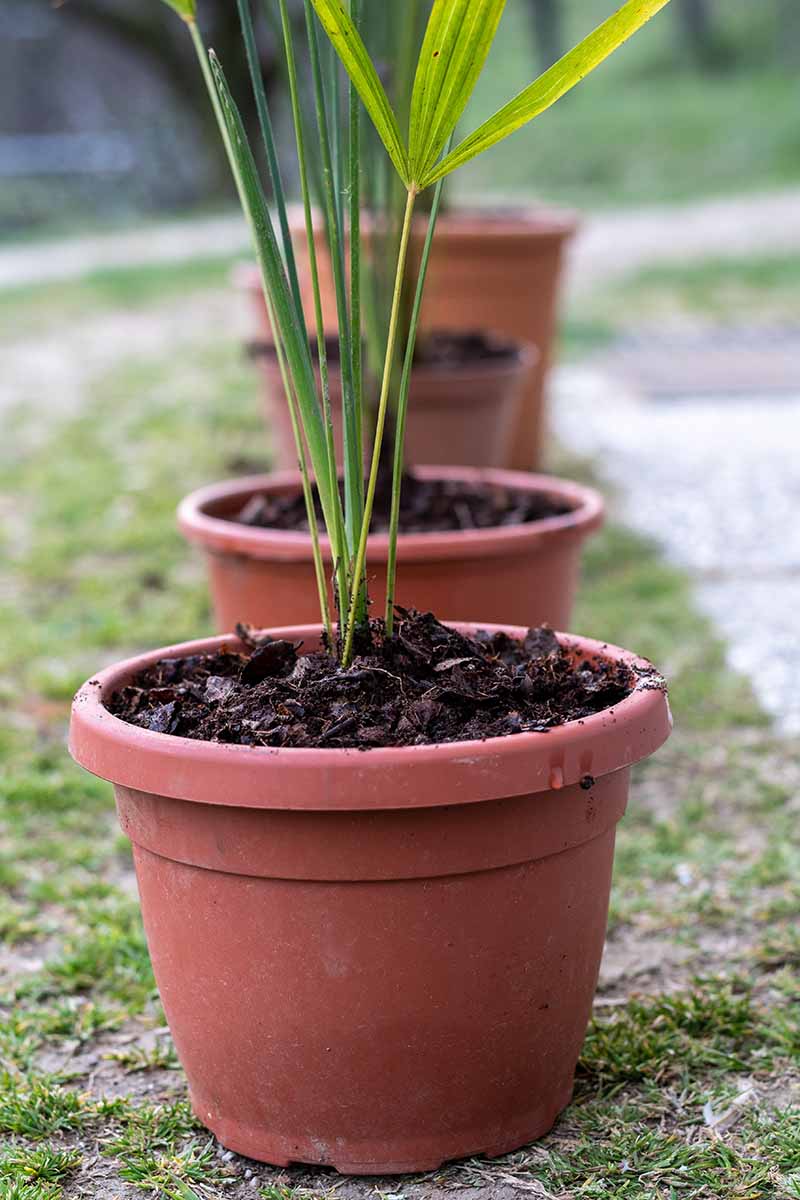
In the garden, choose a spot with freely draining soil with a pH range of 6.0 to 7.0 in full sun.
Dig a hole the same depth and a little wider than the root ball. Set the plant in the hole so the top of the root ball is level with the ground.
In the absence of rain, water thoroughly at least once a week until you see the emergence of new growth. This can take a few weeks to a few months.
Once these plants are established they are typically drought resistant, unless you’ve planted one of the species native to humid tropical rainforests.
Again, always do your research on the species you’ve selected.
If you’re transplanting into a pot, make sure to fill it with the aforementioned freely draining soil. An unglazed ceramic pot is best, as it will allow soil to dry out evenly.
Choose a pot several inches wider than the diameter of the root ball, and make sure it has drainage holes in the bottom.
Place the root ball in the pot so that the base of the stem and the top of the root ball is about one to two inches below the top of the pot. Fill in with soil and tamp it down well.
After planting, water in well. Very well! Pots can dry out very quickly, and making sure new transplants have plenty to drink is critical to their success. Plan to water every day in hot, dry weather.
How to Grow Fan Palms
Most fan palms hail from warm, sunny places around the globe. When growing these plants, try to emulate the specific conditions they come from.
Just close your eyes and imagine you’re in the south of France, or a poolside in Dubai, or even at the edge of a crystal clear pool on the warm sands of Palm Springs, California. Channel those meteorological conditions and you’ll do just fine. Think warm, bright, and dry.
The ruffled fan palms, however, are an exception to this general rule and instead prefer moist soils and shadier conditions.
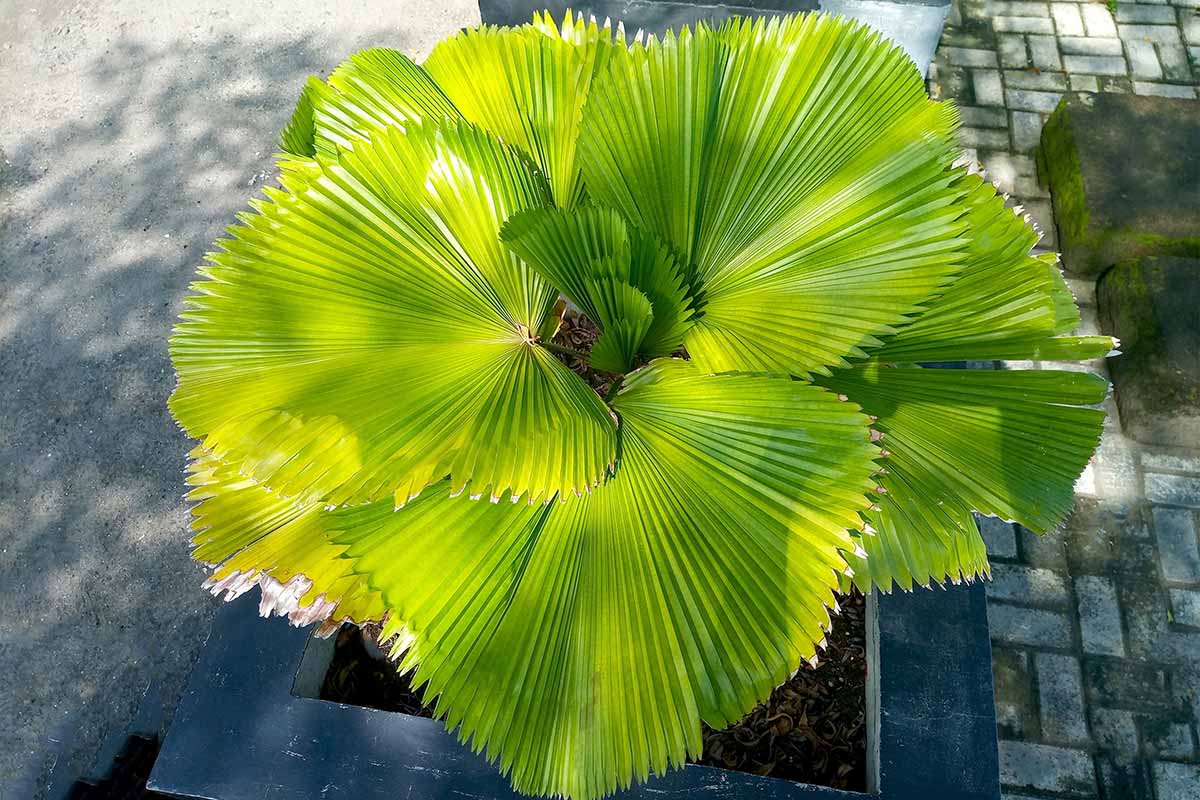
If you’re growing outdoors many of the fan palms will grow rapidly, so make sure to give them plenty of room to spread out.
A good general rule of thumb is to ensure they are spaced at least six feet from other plants and structures. Avoid cramped or humid conditions which will invite fungal problems.
Water deeply during dry spells. If there’s been no rain for more than a week, especially if the weather has been hot, lay a hose at the base of your tree and run a trickle over the roots for several hours.
For species such as the ruffled fan palms, depending on where you live, you may need to water every few days. These types prefer even moisture and do not want the soil to become dry to the touch.
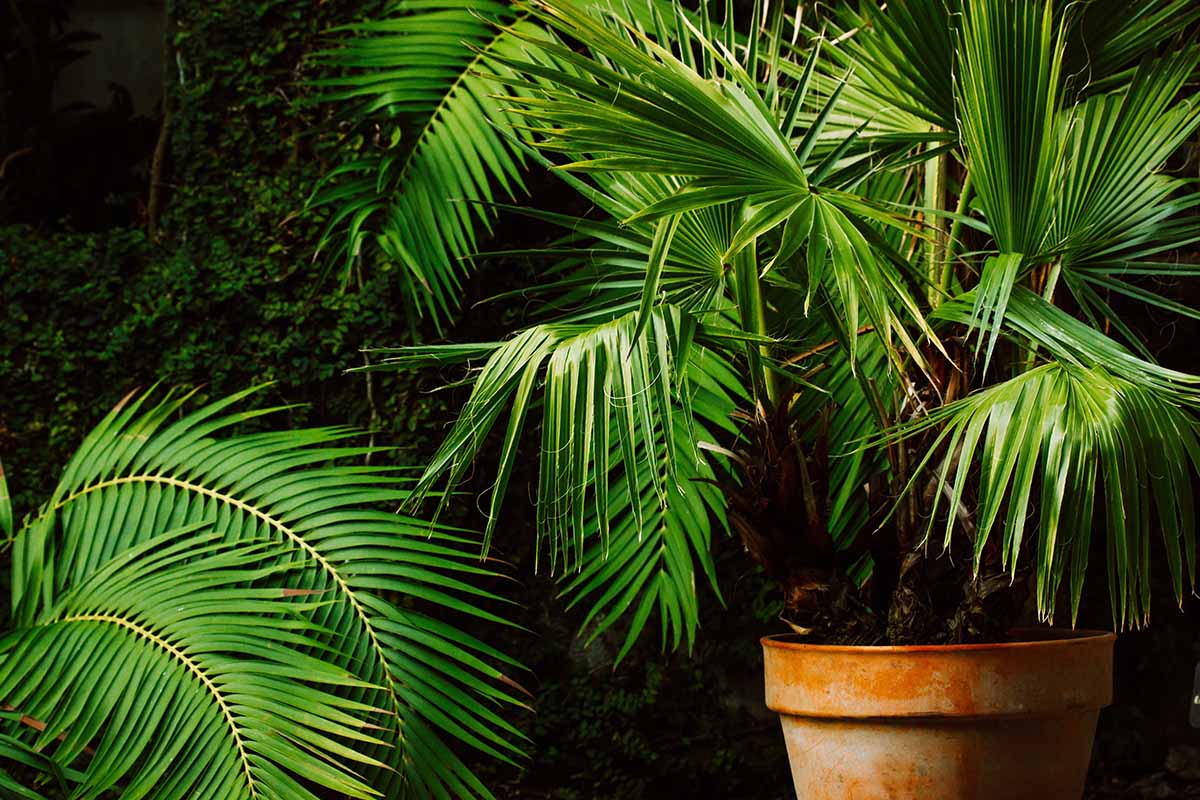
When grown indoors, the conditions should be roughly the same as outside: think brightly lit, spacious, and warm.
The European fan palm (Chamaerops humilis) is a little more tolerant of lower light, cool conditions. It’s a good choice for growing as a houseplant.
Pick this species over the Mexican fan palm (Washingtonia robusta), for instance, which really prefers warmer, sunnier conditions.
To situate a fan palm indoors, choose the brightest corner of the house. Any of these species need at least six hours of bright, indirect sunlight per day.
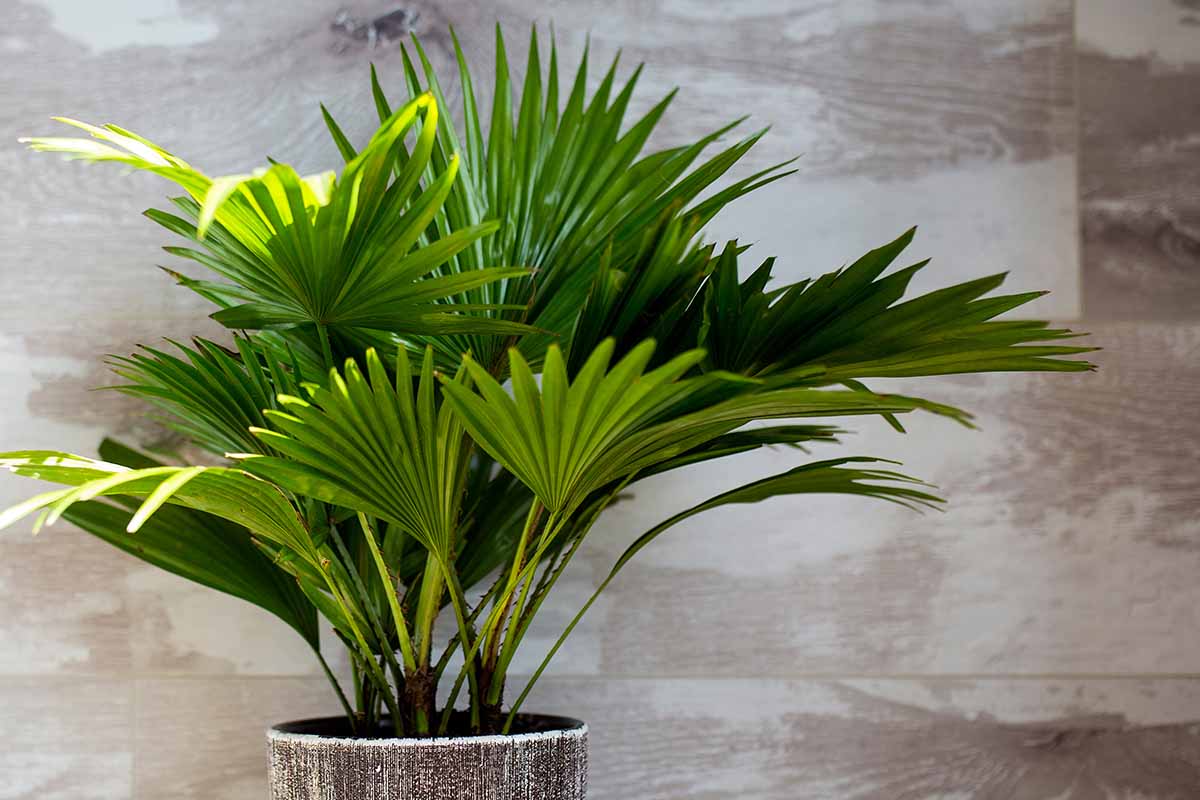
When watering an indoor plant, thoroughly drench the soil. For most fan palms, you’ll want to allow the top inch or so of the substrate to dry out before watering again, about once weekly.
There are some exceptions to this, however, such as in the case of the ruffled fan palm (Licuala grandis), which prefers a little more water. Water this species when the surface of the soil is dry to the touch.
Indoors or out, fan palms enter a period of dormancy and sluggish growth in winter. Back off the watering even more at this time to avoid root rot and other fungal problems.
Growing Tips
- Plant in freely draining soil.
- Site in a location with abundant sunlight or bright light indoors.
- Water once a week during the first six months after planting, in the absence of rain.
Pruning and Maintenance
Maintenance for indoor fan palms is a little more involved than for those growing outdoors in the garden.
Outside, location is everything. If your plants are situated in freely draining soil, not too densely crowded with other specimens, and basking in ample sunlight, they are virtually maintenance-free.
Having said that, most do respond well to fertilizer. Plants can be fertilized using a special palm tree food such as Miracle-Gro Shake’N’Feed, available via Amazon.
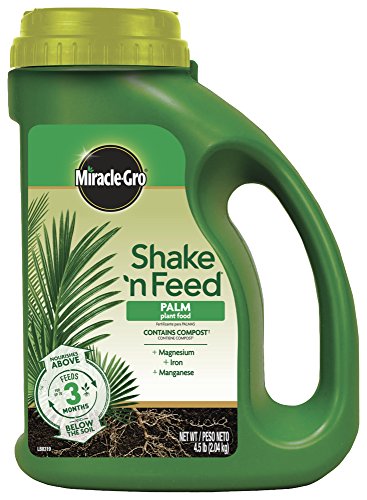
Water deeply after fertilizing to help the nutrients trickle down to the roots. Alternatively they can be given a top dressing of several inches of compost in spring and again in summer.
Pruning outdoor specimens will deprive them of the iconic shaggy skirt that makes many of them so attractive. Not all fan palms have these persistent petticoats of old foliage as some shed dead fronds on their own.
If you have a species that grows tall, such as the California type, consider removing fronds as they die, especially if your specimen is planted in a high traffic area. A bonk on the head with one of those leaves is not a fun experience.
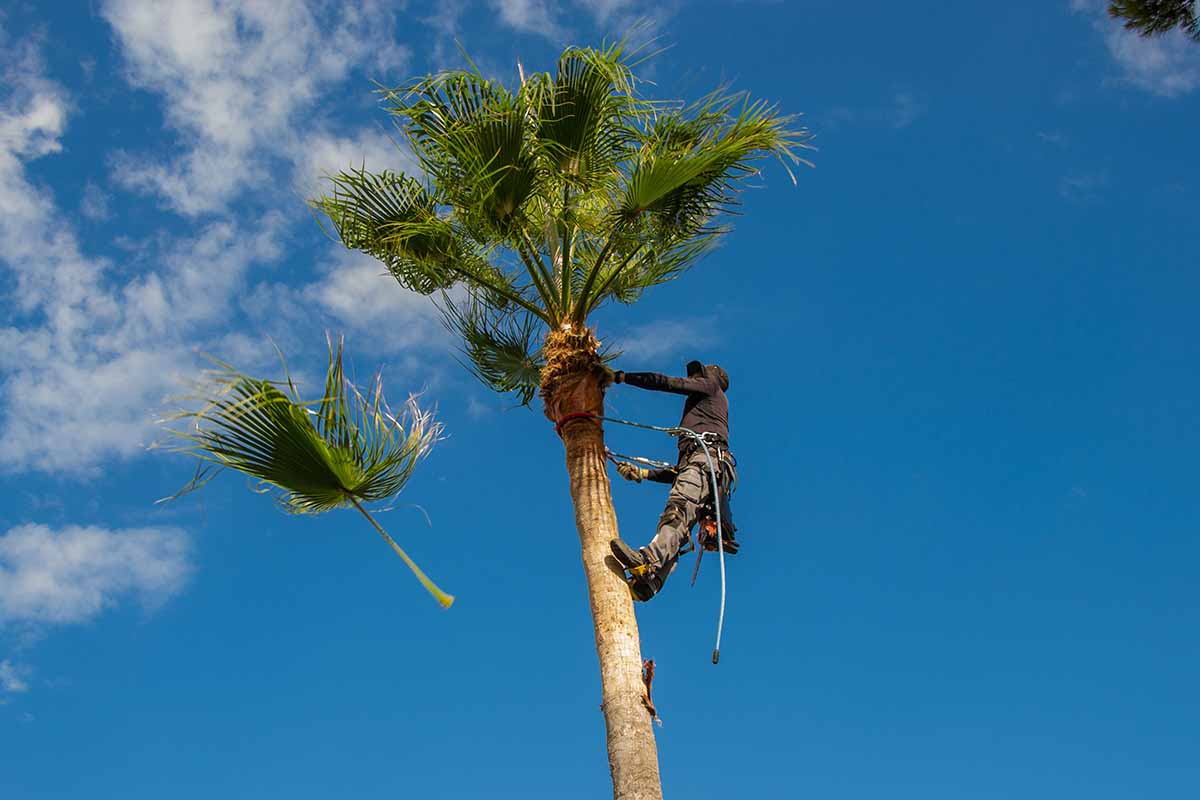
To cut off a dead frond, use a sharp pruning saw and remove it as close to the base as possible, without damaging the tree’s trunk. In many instances, the old foliage can actually just be pulled off using a little muscle power.
Prune houseplants to remove dead or diseased foliage. Removal of old fronds is more important inside than out as old plant material can harbor pests.
If you are growing your fan palm as a houseplant, care will depend on the particular species you’ve chosen. Generally speaking, these plants do not like to be repotted.
Once they grow large enough to require a bigger container, you’ll need to repot, but don’t move them in and out of pots on a whim.
In order to get the infusion of nutrients they need, fertilize once a month from spring until fall, when they prepare to enter dormancy.
Any palm-specific fertilizer will do, such as the one mentioned above. Always water deeply after applying fertilizer.
Notable Fan Palm Species
As mentioned above, fan palms are a mixed bag when it comes to cultivation and maintenance requirements.
They even differ widely in appearance. Read on to discover some of the most beautiful and popular species.
Bismarck
Native to Madagascar, this striking gray-blue species is hardy in USDA Zones 9 to 11.
Capable of growing to heights of 50 feet, Bismarkia nobilis can put on three feet per year under the right conditions.
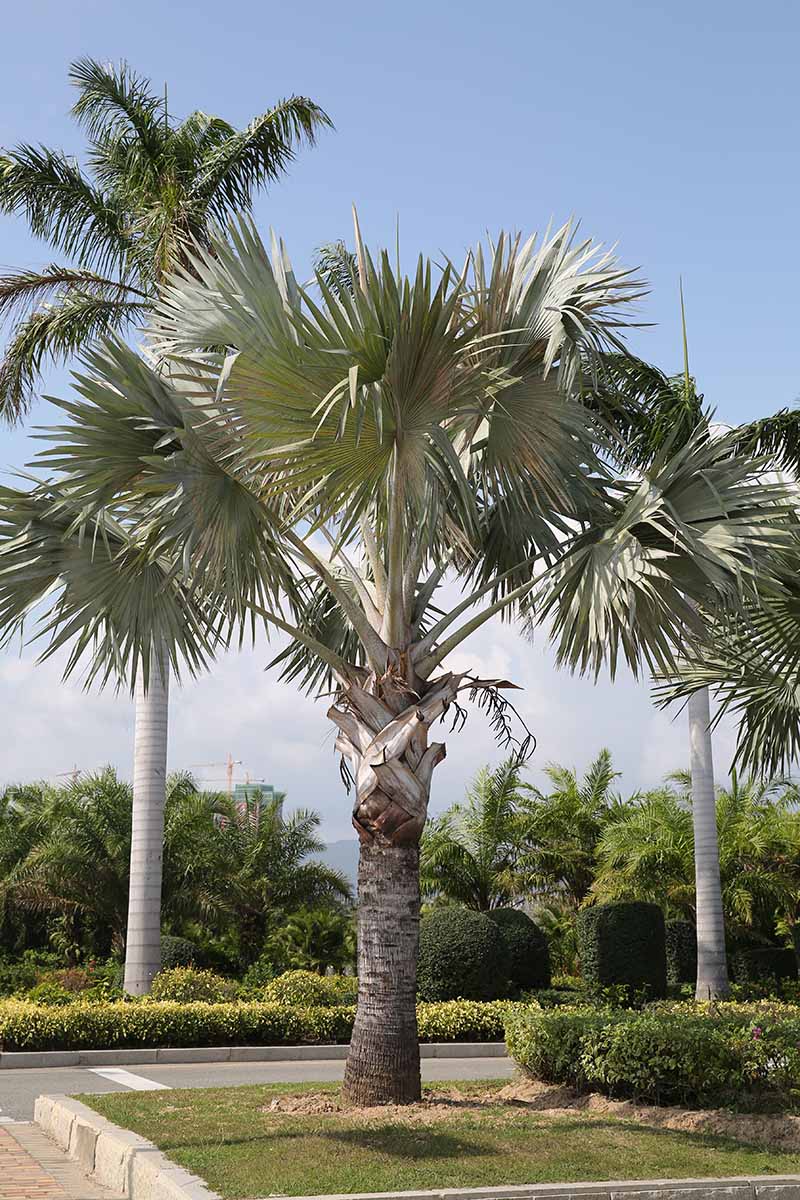
Up to 25 large fronds create the broad, spherical crown of the adult tree. Beautiful, long clusters of creamy flowers eventually produce copious, small, blue fruits.
It’s possible to grow this gargantuan species as a houseplant, provided you have lots of room. It won’t grow nearly as tall indoors as it does outdoors, but it’s still large.
Although this species loves full sun and consistent moisture, it is drought tolerant once established.
Fast Growing Trees carries B. nobilis in three- and seven-gallon containers.
California
Icon of its namesake state, the California fan palm (Washingtonia filifera) is native to the southwestern states and Baja, Mexico.
Highly drought resistant, this large tree loves sunny, dry conditions and can grow up to 60 feet tall with a broad, columnar trunk.

While it is possible to grow this species as a houseplant, it looks and does best when allowed to grow to its fullest, tallest proportions outdoors.
Hardy in USDA Zones 8 to 11, it can survive brief cold snaps and is fairly fire resistant.
The shaggy skirt this species accumulates as it ages is important to wildlife, providing nesting sites and shade.
Chinese
As its name suggests, the Chinese fan palm (Livistona chinensis) hails from east Asia.
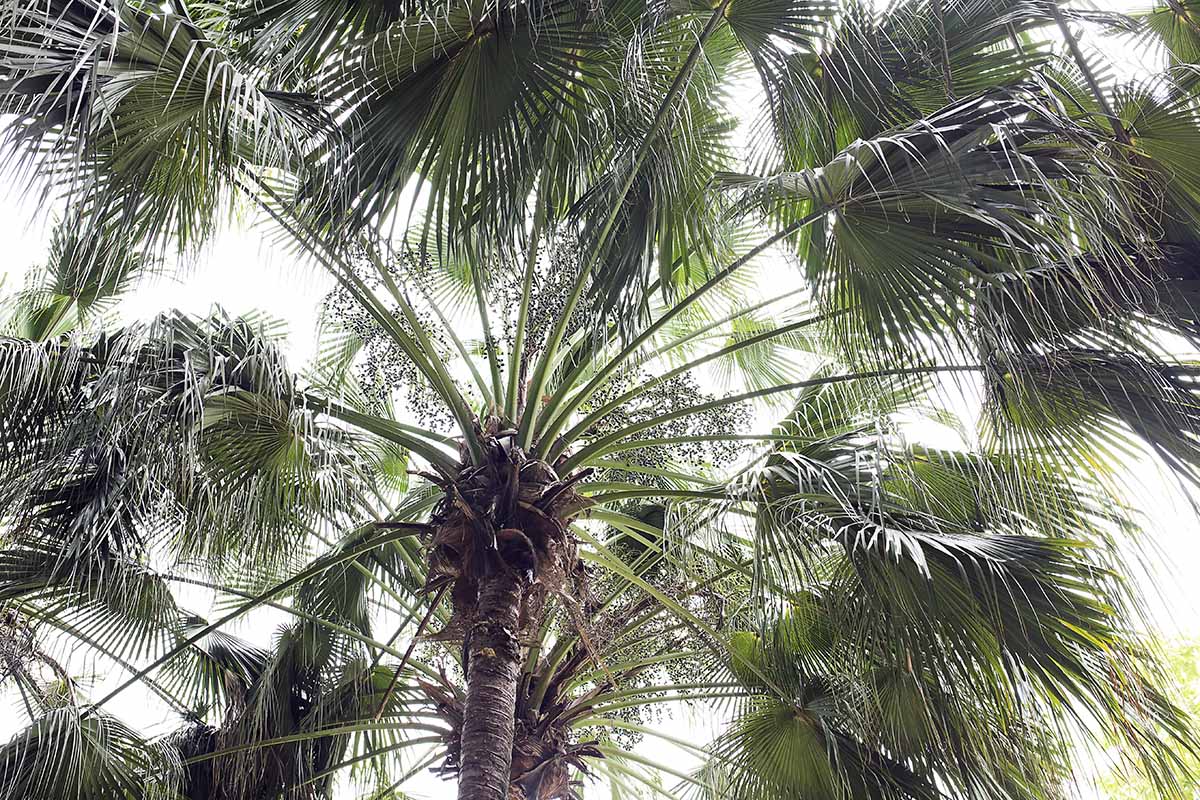
Growing up to 50 feet tall and 12 feet wide, its long, slender, drooping leaves can grow up to six feet in length. L. chinensis is hardy in USDA Zones 9 to 11 and is quite tenacious.
In areas such as Florida and Hawaii, this species is listed as invasive. Summer displays of creamy flowers yield small fruits which are either blue or pink.
Situated in a nice, bright sunny room, this species can also be grown as a houseplant.
You can find L. chinensis plants available from Planting Tree.
European
A common sight throughout the Mediterranean coast, Chamaerops humilis is an attractive species which retains a shrubby, multi-stemmed appearance in bright light conditions.
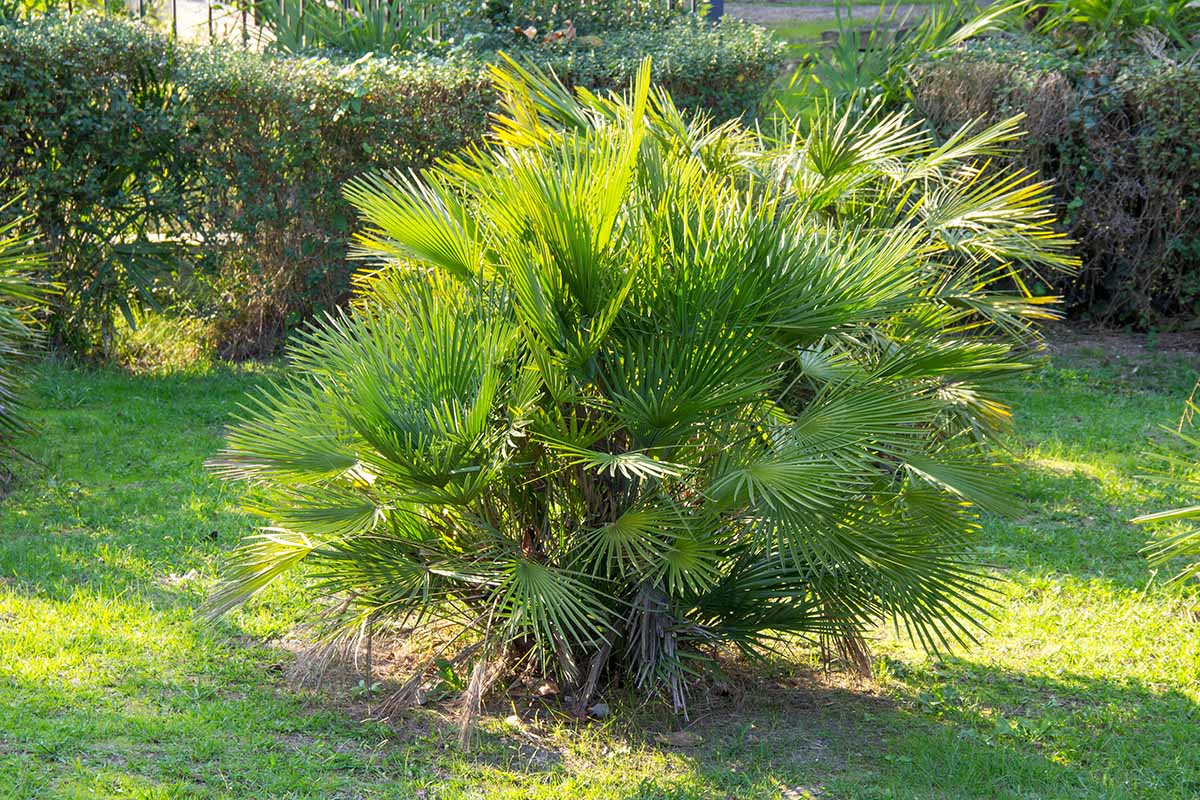
Growing up to 15 feet tall, C. humilis is one of the more cold-tolerant species, and thrives in Zones 8 to 11.
Bearing the attractive, large, triangular fan-shaped leaves distinct to this group, this species’ flowers and fruit are largely inconspicuous.
More tolerant of cool, low light conditions, European fan palm is a good choice to grow as a houseplant.
Find plants in three- or seven-gallon containers available at Fast Growing Trees.
Mexican
Native to the Sonoran desert and Baja, Mexico, Washingtonia robusta is a drought resistant species that can grow to 100 feet tall!

Despite its size, this species can also be kept as a houseplant. It looks and does best outside, however, where it has lots of room to grow and spread out.
The crown bears a dense cluster of glossy, green leaves, each about five feet wide, and in summer, dense clusters of small dark fruits adorn the trees.
Hardy in Zones 9 to 11, this species can tolerate some cold weather and prefers freely draining soils in arid climates with plenty of sunshine.
You can find W. robusta plants in three-gallon containers available at Fast Growing Trees.
Ruffled
One of the smaller species, Licuala grandis should certainly not be overlooked.
Hailing from humid, tropical habitats across Australia, the Pacific Islands, and East Asia, this tree grows up to 10 feet tall and sports wide, glossy, densely pleated fronds.
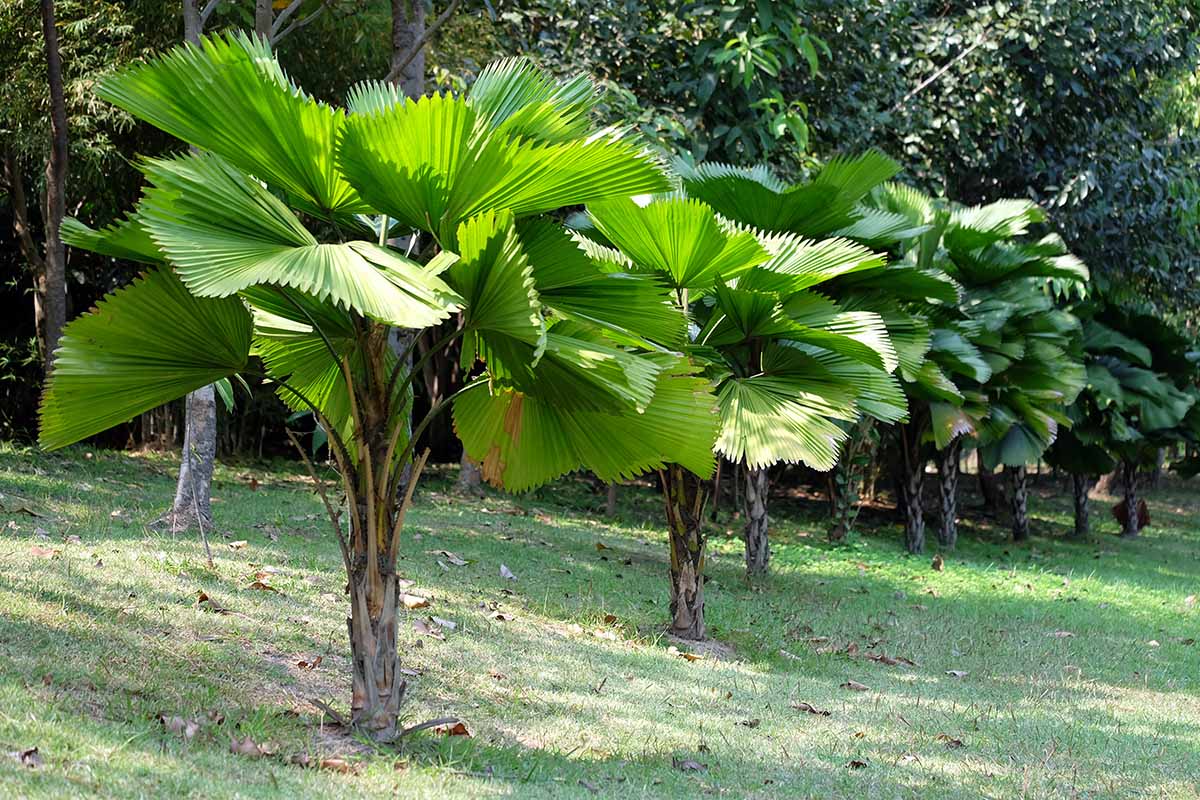
Unlike some of the other species discussed here, ruffled fan palm prefers ample moisture and lots of shade, with dappled indirect light indoors. It is perfect for humid environments or understory plantings.
Hardy outdoors in Zones 10 to 11, this fan palm can be grown inside as a houseplant, too.
Windmill
Native to the temperate and subtropical forest of China, Trachycarpus fortunei – aka the windmill fan palm – prefers partial shade, moderately fertile, freely draining soils and is hardy in Zones 7 to 11.
Its ability to tolerate cold temperatures make it one of the best choices for northern gardeners to try.
If your local weather makes outdoor growing an impossibility, you can try it indoors, as a houseplant.
Large, three-foot-wide leaves grow from the crown. In summer, attractive clusters of yellow flowers droop in two foot long panicles.
You can find T. fortunei available in #5 containers at Nature Hills Nursery.
Managing Pests and Disease
Not all fan palms are alike, and the pests and diseases each species is susceptible to will differ slightly.
Plants kept in pots indoors will encounter different pests and diseases than those kept outside.
Pests
Here’s a general overview of the pests you might encounter:
Palm Aphid
Likely disseminated by the horticultural trade, Cerataphis brasiliensis and C. latanea are a common pest of these trees and love hot, humid environments.
You’re more likely to find these little insects indoors in areas where air circulation is low and conditions tend to be more cramped, but they can cause trouble outside, too.
Interestingly, these aphids look more like scale insects than the aphids that infest your roses. They resemble little brownish-red spots, surrounded by a white fringe, and are about one to two millimeters in diameter.
Severe infestations can cause loss of vigor, yellowing foliage, and stunted growth. Clusters of these aphids typically target new growth.
Inspect newly purchased specimens for these common pests and if you find them, immediately wash them off with a strong stream of water or a soapy rag.
Horticultural oils such as neem oil are effective at eliminating populations of these pests, too. Be sure to follow all the directions on the label and always wear gloves when applying.
You can find Bonide Neem Oil available from Arbico Organics.
Learn more about how to manage aphids in our guide.
Palm Leaf Skeletonizer
The larvae of the palm leaf skeletonizer moth (Homaledra sabalella) create large translucent blotches on the foliage.
In the case of large infestations, the leaves will die and eventually drop off. Early detection of an infestation is important so you can take action to minimize damage before populations grow.
Inspect your trees for the frass left behind by the caterpillars. Once caterpillar frass has been found, wash the leaves thoroughly with a strong stream of water to dislodge the larvae.
Pick off and destroy any stragglers. These moths range across the Caribbean and up into Florida and other southeastern states.
Palm Weevil
Listed as an invasive species outside of its native South American range, Rhynchophorus palmarum is a big problem for palms.
Adults are about an inch and a half long, black in coloration, and have a long proboscis.
The insects lay eggs in the crown of the plant and the larvae feed on bud tissue, inhibiting the tree from producing new growth.

In the case of severe infestations, the tree may eventually die. Although many other types of weevils feed on the crown of these trees, none are as destructive as R. palmarum.
For small infestations, removing the insects by hand or applying neem oil will help. Otherwise, your tree must be destroyed and discarded to avoid spreading this pest.
Tessellated Scale
Tessellated scale (Eucalymnatus tessellatus) is particularly common on specimens kept as houseplants or in greenhouses.
The insects are small, oval, and dark brown in color and can often be found along leaf veins. If you notice brown dots or splotches on the foliage, take a look along the undersides of the leaves and along leaf veins.
Early infestations can be treated with vigorous, repeat washing using a rag and a strong stream of water.
Bad infestations cause large discolored patches on foliage and require treatment with insecticides. If left untreated, a large infestation can kill the plant.
Check out our guide to identifying and controlling scale for more information.
Disease
Generally speaking, the fan palms are a robust bunch but they are particularly susceptible to overwatering, and the fungal diseases that can occur in moist environments.
These are the most common issues that plague these plants:
Butt Rot
Although it sounds like a five year old named this common disease, the term “butt rot” actually refers to the trunk of the plant, which hollows and decays as this condition progresses.

The first sign of this fungal infection, caused by Ganoderma zonatum, is drooping or yellowing leaves and loss of foliage.
To control the spread of this disease, remove and destroy all affected plants. Unfortunately there is no cure.
G. zonatum is commonly found in soils, so discard any infected potting soil and avoid planting fan palms in areas of the garden where affected plants once lived.
False Smut
A fungal disease common in very humid conditions, false smut (caused by species in the Graphiola genus) shows up as lots of little black spots on the foliage.
Eventually, tiny threads, or filaments, may emerge from these black spots. These are actually the fruiting bodies of the fungus.
Remove and destroy affected leaves quickly. This disease typically resolves once the plants are moved and given adequate air circulation and sunshine. This is easy to do for indoor, potted fan palms, but not so easy if your specimen is outside.
Outside, the additional stress of moving a fan palm may contribute to its end. For this reason, if you identify false smut outside, work quickly to remove affected leaves.
Fungicides are not typically necessary with good management of the growing environment. However, if you have an affected tree outdoors, consider calling a licensed fungicide applicator to help treat your plant.
Leaf Rot
A general term for a fungal infection of the leaves, leaf rot is caused by a wide variety of fungi.
The cause is generally overwatering and wetting of the leaves.
Black or brown spots emerge on the foliage followed by dieback. Maintaining good air circulation between plants and making sure leaves stay dry generally fixes the problem.
Phytophthora Bud Rot
This disease is caused by Phytophthora palmivora, a water mold (oomycete) which typically gains entry into palm tissue damaged by cold or other trauma.
Once inside, this pathogen causes browning and rotting of young leaves and tender developing buds.
Any affected plants should be destroyed, and not composted. If your plant is growing in a pot, remove and discard all soil to prevent further spread.
Best Uses for Fan Palms
Because fan palms prefer warm, sunny weather, for many of us they’re best kept as potted plants that can be moved indoors or out, depending on the season.
In a container you can slot your fan palm into a corner of the garden to add a temporary tropical accent to a garden bed. Importantly, you’ll also be able to easily transport it inside once the weather gets cold. Many types make excellent houseplants year-round, too.
If you’re lucky enough to live somewhere where the sun and warmth is constant in Zones 9 to 11, you can plant one of these striking trees as a standalone specimen, or in the back of a bed where it can grow tall and make a visual impact.
The larger fan palms, particularly those in the Washingtonia genus, are excellent for this!
Quick Reference Growing Guide
| Plant Type: | Flowering evergreen monocotyledonous perennials | Flower/Foliage Color: | Cream; light to dark green |
| Native to: | Africa, Asia, Europe, North America, Oceania, South America | Maintenance: | Low |
| Hardiness (USDA Zones): | 7-13, depending on species | Tolerance: | Heat, some drought, shade, depending on species |
| Bloom Time/Season: | Spring, summer | Soil Type: | Loose, sandy to loamy |
| Exposure: | Full sun to part shade | Soil pH: | 6.0-7.0 |
| Spacing: | 3-25 feet, depending on species | Soil Drainage: | Well-draining |
| Planting Depth: | Just below surface (seeds), depth of root system (transplants) | Uses: | Accents, container plantings, groupings, houseplants, privacy plantings, shade, specimens |
| Height: | 5-100 feet | Order: | Arecales |
| Spread: | 3-15 feet | Family: | Arecaceae |
| Water Needs: | Low to moderate, depending on species | Genera: | Bismarkia, Chamaerops, Liculala, Livistona, Trachycarpus, Washingtonia |
| Common Pests and Disease: | Palm aphids, palm leaf skeletonizer, palm weevils, tessellated scale; bud rot, butt rot, false smut, leaf rot | Species | B. nobilis, C. humilis, L. grandis, L. chinensis, T. fortunei, W. filifera, W. robusta |
A Fan of Fan Palms
For the most part, fan palms are an easygoing bunch. They just want the good things in life – heat, sunshine, and a nice, even breeze to keep the humidity down.
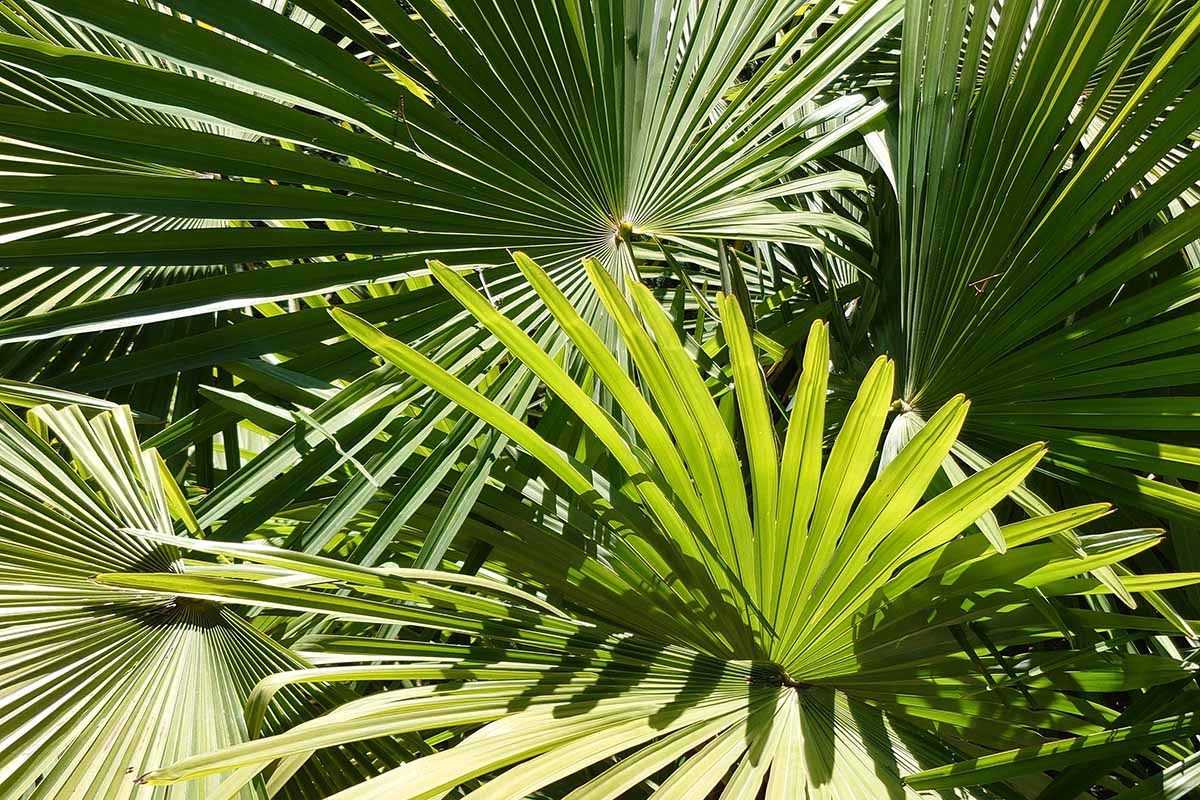
Their fan-shaped leaves can create a striking accent outside or make a corner in your brightly lit bedroom feel like you’re poolside, a world away.
Are you growing one or more fan palms? Let us know in the comments section below! And if you have any questions, ask away. We’re happy to help.
And if you want to learn more about palms, have a read of the following guides next:
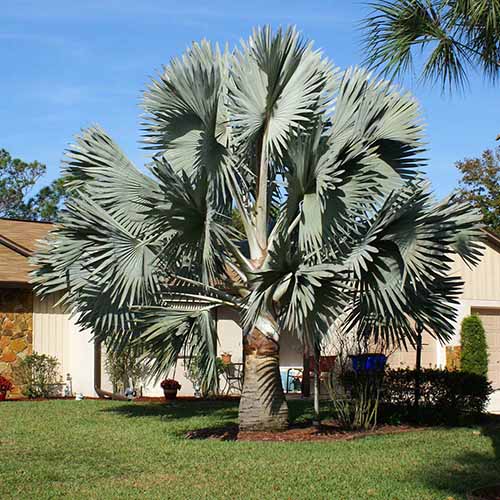

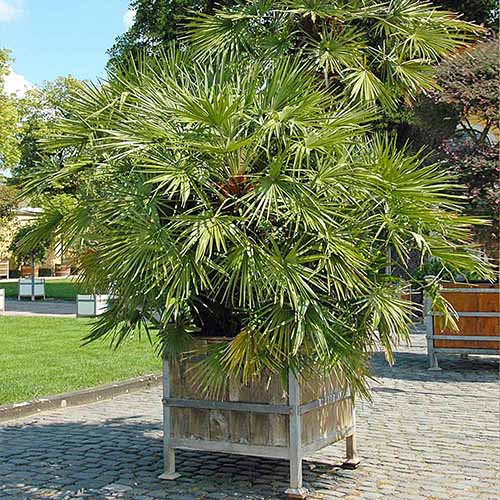


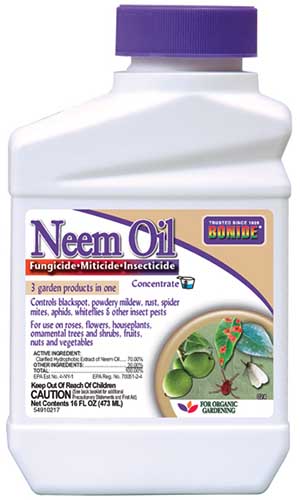
great detailed information. I am in coastal Oregon and I have a fan palm that I’ve kept in a container and is quite happy except it’s starting to get a little yellow and I think I need it in a bigger container I do not want to put it in the ground. this is a dwarf fan that I bought at the local Home Depot years ago. I want to keep it in a container to control the roots and the size. It may be hard to get out but I’m planning on moving it to a bigger container and… Read more »
Hi Suzanne, apologies for the delay in responding. I’ve spoken to the author, Molly, and she has this to say: Generally speaking, fan palms don’t like to be repotted but sometimes they grow so large you simply must! Sounds like your fan palm might be suffering from a nutrient deficiency (yellow leaves often signal this) so moving it into a new, larger pot, with suitable fresh potting soil is appropriate. Make sure to water well once you’ve repotted it and continue to fertilize once a month with palm-specific fertilizer until dormancy in the fall. Your watering regimen should remain the… Read more »